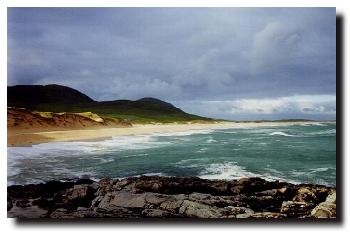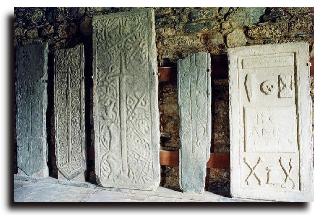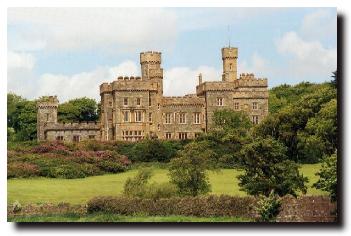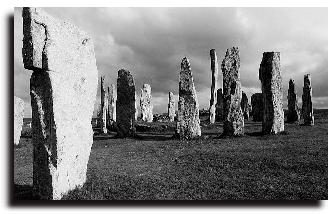
Harris
Harris not really an island as it covers the lower third of Lewis and Harris, south of Loch Seaforth and the hills of Harris, rather like Siamese twins who have never been separated. The island was divided between two Macleod sons and that artificial division has remained. Harris itself is nearly divided by East and West Loch Tarbert and the village of Tarbert stands on the narrow isthmus. North Harris is mountainous with Clisham at 2,600ft the highest mountain in the Western Isles. In the west coast there are sandy beaches (including the lovely Luskintyre Beach) and low lying land while the east coast is more rocky with many inlets.
There are ferries to Tarbert from Uig on Skye every day except Sunday and there is a car ferry from North Uist. Of course, you can reach Harris from ther north by road via Stornoway in Lewis.

On the south of Harris is Leverburgh, named after Lord Leverhulme who at one time owned Lewis and Harris and attempted to bring employment to the area by expanding the fishing industry and creating fish processing. Also in the south of Harris is the medieval church of St Clement which has the magnificent tombs of the MacLeods of Dunvegan (in Skye). See the illustration above and more at Photonet.
There are a number of islands off the coast of Harris which have their claim to fame. Scalpay at the mouth of East Loch Tarbert was where Bonnie Prince Charlie sheltered for four days as the guest of Donald Campbell. Campbell was not a Jacobite but fulfilled his obligations as a Highland host to such an extent that when an armed party arrived to capture the Prince, Donald Campbell fought them off. Further to the east are the Shiant Islands, overrun by black rats. Surprisingly, because they are now so rare, the rats are regarded by environmentalists as more important than the puffins. On the west coast, the crofter cottages on the island of Scarp are now used as holiday homes for tourists.
To the west of Harris is the island of Taransay, uninhabited since 1974 until the year 2000 when 36 people landed to take part BBC TV programme Castaway 2000, planning to stay for the full year. The "castaways" had a supply boat every two weeks, wind-powered electricity, an emergency phone and at one point two of the participants went to the supermarket at Tarbert as they were short of fresh fruit and vegetables!
Lewis

The northern two-thirds of the island of Lewis and Harris, has a population of over 20,000. The name is derived from "Leog" which is Irish Gaelic for water lying on the surface. When you see the large numbers of inland lochs on this relatively low-lying island, the name is very appropriate.
Stornoway is the has a population of 8,000 which is the home of the Western Isles Council which administers all of the Outer Hebrides. Of course, Lewis and the other Western Isles only became part of Scotland in 1266 when the islands were given up by the Norse king. Lews Castle sits above the town (see illustration above). There is a ferry service from Ullapool (except on the Sabbath) and an air service from Glasgow.

The Butt of Lewis in the far north is a paradise for ornithologists. Other tourist attractions on Lewis are the Callanish Standing Stones (47 survive from the time they were erected 4,000 years ago), the Black House Museum and Shawbost Folk Museum. Only rarely seen on the island are the Lewis Chessmen which were made by 12th century Norsemen and were found in the sand in Lewis in 1831. The chessmen are on display in Edinburgh and London.
In the days of the Highland clans, the MacLeods ruled the island and frequently resisted the efforts of the King of Scotland to exercise control. Later, in 1623, the Mackenzies headed by the Earl of Seaforth bought much of the land until they sold out in 1844. Gaelic is still a major force on the island - there is even a Gaelic-speaking Pakistani community.



